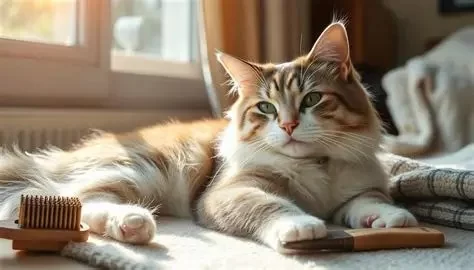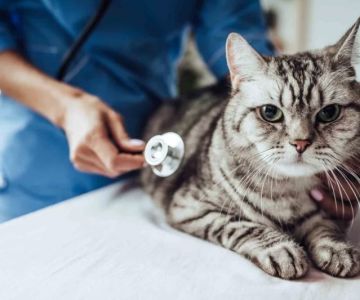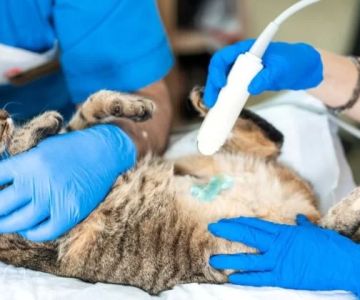- cat-grooming-tips-for-a-healthy-coat-and-reduced-hairballs
- why-grooming-matters-for-your-cat’s-health
- daily-and-weekly-grooming-habits
- how-to-handle-shedding-and-hairballs
- nutrition’s-role-in-coat-health
- real-examples-from-everyday-cat-owners
- when-to-seek-professional-veterinary-help
Cat Grooming Tips: Keeping Coat Healthy, Reducing Hairballs
Cats might be known for their impeccable self-grooming routines, but even the cleanest feline needs help maintaining a truly healthy coat—and keeping hairballs under control. Many U.S. cat owners assume hairballs are simply a “normal” part of cat life, yet frequent hairballs can signal grooming issues, diet problems, or underlying health concerns. This guide breaks down practical cat grooming tips to help maintain a shiny coat while reducing hairballs, all explained in a friendly, real-life way. And whenever you need personalized support, Hidden Brook Veterinary can help you choose the best grooming tools, supplements, or professional care options for your cat.
Why Grooming Matters for Your Cat’s Health
Grooming is far more than a way for cats to keep clean. It plays a key role in regulating body temperature, stimulating circulation, managing shedding, reducing stress, and most importantly—preventing ingested hair from forming hairballs. A well-groomed cat is often calmer, less itchy, and less prone to digestive issues caused by swallowed fur.
1. Cats Shed More Than Most Owners Realize
Even short-haired cats shed significantly, especially during seasonal changes. Loose fur builds up quickly, leading to tangles, mats, and more hair swallowed during self-grooming. Regular brushing helps remove excess fur before your cat can ingest it.
2. Grooming Strengthens the Bond Between You and Your Cat
Many cats learn to enjoy grooming sessions when introduced gently. Turning grooming into a positive, relaxing routine helps reinforce trust and provides you with a chance to observe early signs of skin irritation or bumps that might otherwise go unnoticed.
Daily and Weekly Grooming Habits
Healthy grooming routines vary by breed, coat length, and lifestyle. Long-haired cats like Persians and Maine Coons require more maintenance than short-haired breeds, but all cats benefit from consistent grooming habits.
1. Daily Quick Brushing
If your cat has a long or thick coat, a quick daily brushing helps prevent mats and reduces the amount of fur they ingest. For short-haired cats, brushing every two to three days is often enough. Use gentle strokes at first to help your cat relax into the habit.
2. Weekly Deep Grooming Sessions
A weekly session should include more thorough brushing and examining the coat for mats or shedding buildup. For long-haired breeds, this may include gently separating tangled hair with a comb. If your cat resists, you can break the session into shorter segments.
3. Bathing Only When Necessary
Most cats do not require frequent baths. However, if your cat has allergies, oily buildup, or gets into something messy, an occasional bath can help maintain coat health. Choose cat-specific shampoos and dry your cat thoroughly afterward.
How to Handle Shedding and Hairballs
Hairballs can be distressing—to the cat and to the human who steps on one at 3 a.m. Reducing shedding and improving digestion are key strategies for minimizing them.
1. Use Deshedding Tools During High-Shed Seasons
Spring and fall are peak shedding times. Tools designed specifically to remove loose undercoat fur can dramatically reduce the amount your cat swallows while grooming.
2. Provide Hairball Control Aids
Hairball gels, treat-based fiber supplements, or cat grass can help reduce digestive blockages. These aids lubricate or move ingested fur through the digestive tract more easily.
3. Watch for Signs of Excessive Hairballs
While occasional hairballs are normal, frequent vomiting, constipation, or gagging can indicate a bigger issue such as dehydration, intestinal problems, or excessive shedding caused by stress or allergies. In those cases, a professional exam is recommended.
Nutrition’s Role in Coat Health
A cat’s coat health begins from the inside out. Even with perfect grooming habits, a poor-quality diet can lead to dandruff, dull fur, or increased shedding.
1. Essential Fatty Acids for Skin and Coat
Omega-3 and omega-6 fatty acids improve shine, reduce flakiness, and support skin elasticity. Many owners notice improvements within weeks of adding a vet-approved supplement.
2. Hydration Helps Reduce Hairballs
Hydrated skin resists dryness and shedding. Cats naturally have low thirst drives, so consider adding wet food or providing a pet water fountain to encourage drinking.
3. High-Quality Protein Sources Matter
Cats are obligate carnivores and need animal-based proteins for healthy fur growth. Foods with real meat as the first ingredient often support thicker, smoother coats.
Real Examples From Everyday Cat Owners
One popular online story involved a cat named Milo, a fluffy orange tabby whose owner said he produced “hairballs the size of golf balls.” After switching Milo to a higher-quality diet rich in omega fatty acids and establishing a daily brushing routine, his hairballs nearly disappeared. Cases like Milo’s show how small changes can make a huge difference.
Another owner described how her anxious rescue cat would over-groom during thunderstorms. By incorporating calming grooming sessions and a structured routine, she reduced both stress and excessive shedding.
When to Seek Professional Veterinary Help
If your cat develops bald spots, persistent mats, redness, or frequent hairballs, a veterinary visit is the safest choice. Skin problems can result from allergies, parasites, or endocrine disorders. Professionals can diagnose the root cause and recommend grooming tools, medicated shampoos, or dietary adjustments tailored to your cat’s needs.
Hidden Brook Veterinary can also help determine which grooming products are appropriate for your cat’s coat type and health conditions, ensuring that you maintain a beautiful coat while also preventing hairball-related issues.












